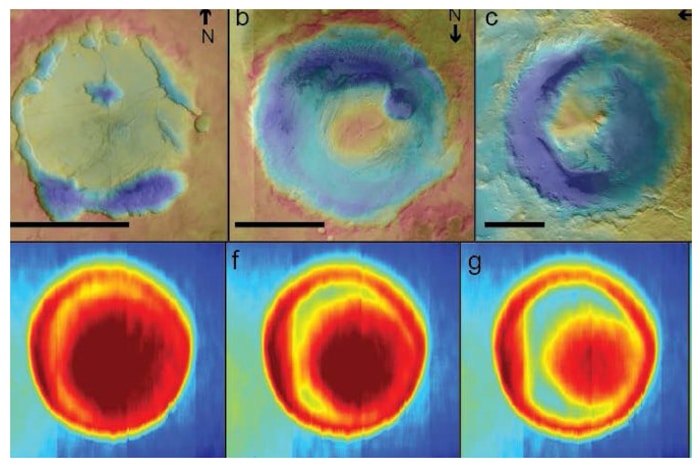
A plethora of evidence over the past few years has led us to believe that lakes of water existed on Mars at some point in recent ages. But those times are all in the past, as some occurrence (likely the loss of atmosphere, perhaps due to a deadly solar storm) caused it all to disappear.
Now, recent images collected from the Curiosity rover gives us more evidence that water didn’t just exist on Mars in droplets—there was probably a proverbial ocean of it.
Gale Crater
Curiosity shows that the Gale Crater was once filled with water. Now, it’s a mile-high mound of sedimentary (layered) rock. Curiosity’s detailed analysis of the mound shows that the sediments at the bottom of the mound came from water, while the top sediments were formed by wind. The strange geography of the mound is believed to be caused by Mars’ strong winds that shape the entire planet’s geology.
To test this theory, researchers created a mini-crater on Earth that measured 30 centimeters (12 inches) wide and 4 centimeters (1.6 inches) deep. They filled it with damp sand, then blasted it with wind. Results show the wind’s movement in relation to different stages of erosion.

The Search Continues
“We went from a filled crater layer cake to this mounded shape that we see today,” said Mackenzie Day, a graduate student at the University of Texas at Austin Jackson School of Geosciences. The resulting composition and structure that we see adds more evidence that Mars was once wetter and warmer in previous eons.
The subsequent analysis of 30 different Mars mounds links them to the Noachian period (3.7 billion years ago). The Noachian period could be the culprit in finding out the mystery of Mars’ water, as it’s believed to represent the beginning of its disappearance, turning the Red Planet into a dry and barren giant.